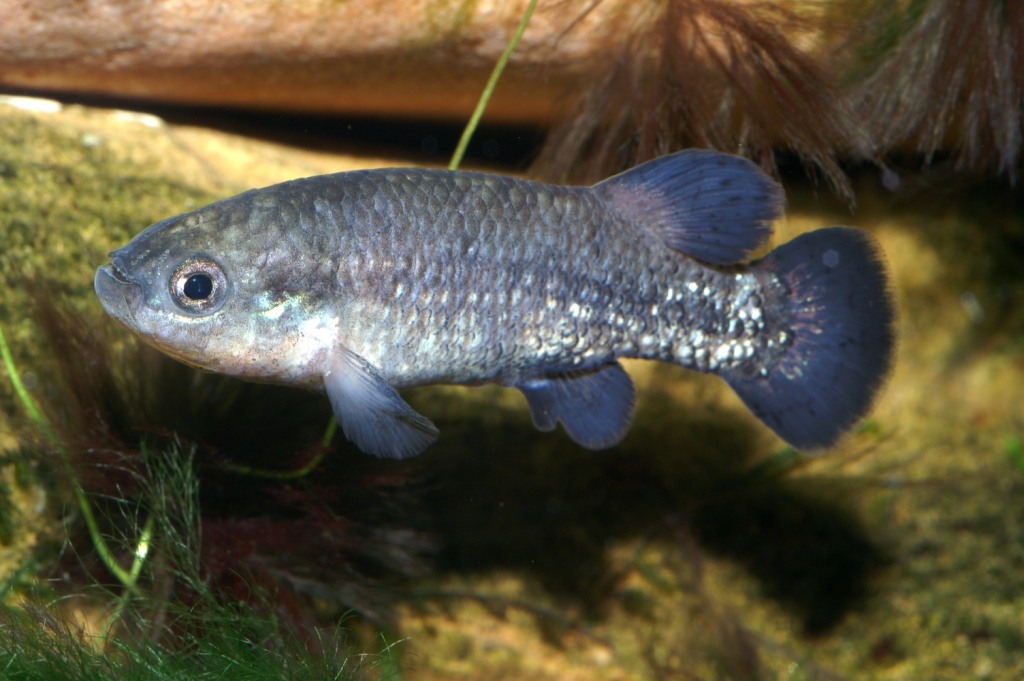The Black Prince
The Black Prince Of all the live-bearing fish available in the hobby, no other species is revered more than Characon audax. C. audax (also known as the Black Prince) is a species of splitfin goodeid endemic to isolated locations in the Upper San Pedro Mezquital Basin of Durango in North-Central Mexico. These fish can be found in shallow pools, ponds, and streams possessing fresh oxygen rich water with dense vegetation.
As with many species of fish from Mexico, C. audax is listed as a ciritcally endangered species. Their ennivroments continue to be threatened by invasive species, such as tilapia, and the on-going contribution of pollution and drying out of locations from farming and sourcing from nearby villages. In the late 1950’s approximately fifty locations were reported to contain C. audax. Today, nine or less of these locations are the existing refuge for this species.
Characodon audax is not a recommended species for the novice. They require specific water parameters in the aquarium and an understanding of their territorial behavior which is similar to cichlids. Water parameters include cool temperatures that range from 68-74 degrees fahrenheit and hard water with a pH reading from 7.8 and up. Optimal filtration and a high oxgen saturation ensure that these fish will thrive. C. audax is not a species that fares well in small aquaria . Therefore, aquariums no smaller than 20 gallons that contains a hard scape that can provide numerous crevices and areas that can be claimed by males and even an alpha female are best suited for housing this territorial species.
I currently have four aquariums set up for Characodon audax, El Toboso. Tanks range in size from 20-40 gallons. Each breeding colony consists of two males and up to four females. Tanks are heavily planted and hard-scaped with plenty of rocks and crevices to lessen terriorial aggression. As they mature, males tend to aggressively compete for the attention of the females. And sometimes the Alpha fish (male or female) will bully the other inhabitants. Providing areas of seclusion helps to alleviate aggression.
C. audax are sexually dimorphic. Males can easily be distinguished from females by their dark black finnage. Females tend to be slightly larger and drab in clolor. Courtship consists of a choreographed display by the male to entice the female. The gestation period for fry is six weeks. Females can produce up to twenty fry. But usually produce ten or less. Fry are born with an umbilical cord which falls off after a few days. For the first twelve to twenty-four hours the fry are not very mobile. This is when they are at their most vulnerable. During this period, fry generally lay on the bottom. This is where a heavy planted aquarium can provide refuge for the fry while they gain stregnth and mobility. To increase the chances of fry surviving, I place the gravid female in a ten gallon planted tank so that she can drop fry without other tankmates preying on the newborns. Once the fry are born, I remove the female and allow her time to rest before placing her back into the breeding colony.
Fry can accept live baby brine on the first day. I also provide finely crushed spirulina flake. Fry are fed three to four times daily. To ensure water quality, twenty percent of the water is changed daily. C. audax grow relatively fast when fed quality foods frequently combined with frequent water changes. Distinguishing the sex of young generally happens between ten and twelve weeks of age. At this time, it is important to montior for aggession and modify the environment as needed.
Of all the species that I currently breed in my fish room, I find that Characodon audax displays some of the most interesting behaviors compared to other live-bering fish. Striking deep color and the personality of a cichlid all in a little two to three inch fish. If you are looking for a challenging fish to add to your breeding program, C. audax does not disappoint. After working with this fish over the last year, they truly have become one of my favorites. Hopefully by sharing this information, more hobbyists will find interest in breeding this species to ensure it’s future in aquaria for years to come.
Ed Moats
Ed’s Aquatic Exotics
Smock, Pennsylvania
Greater Pittsburgh Aquarium Society
REFERENCES:
American Live Bearer Society; Profiles: Characodon audax “El Toboso”; WWW.americanlivebearersociety.com; accessed 11/28/2022
Tropical Fish Hobbyist Magazine; www.tfhmagazine.com ; “A Quest for Goodeids in Mexico: Searching for the Black Prince”; Smith/Miller 1986; accessed 11/28/2022



